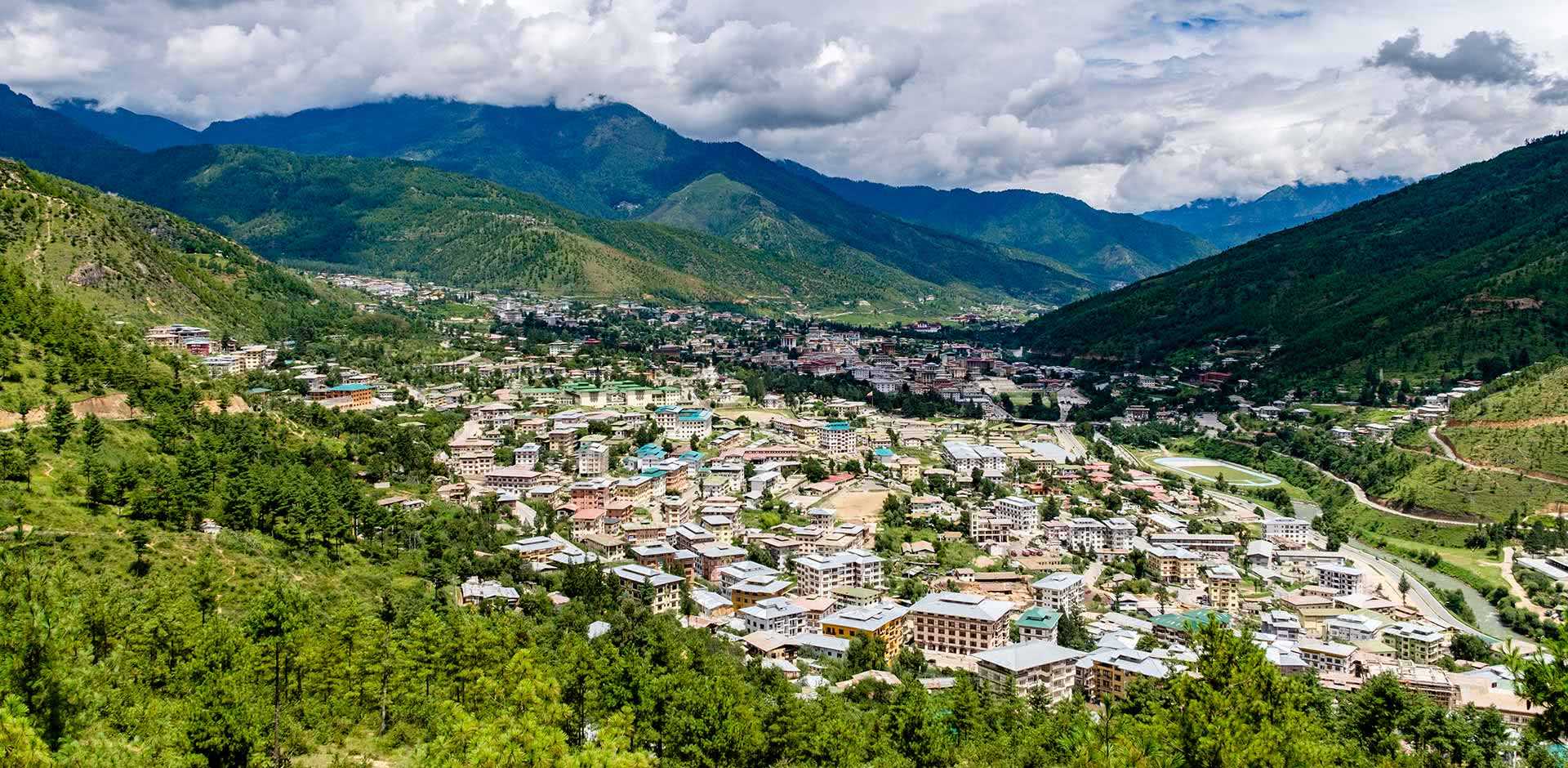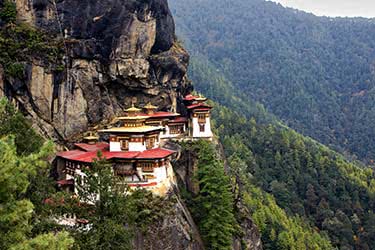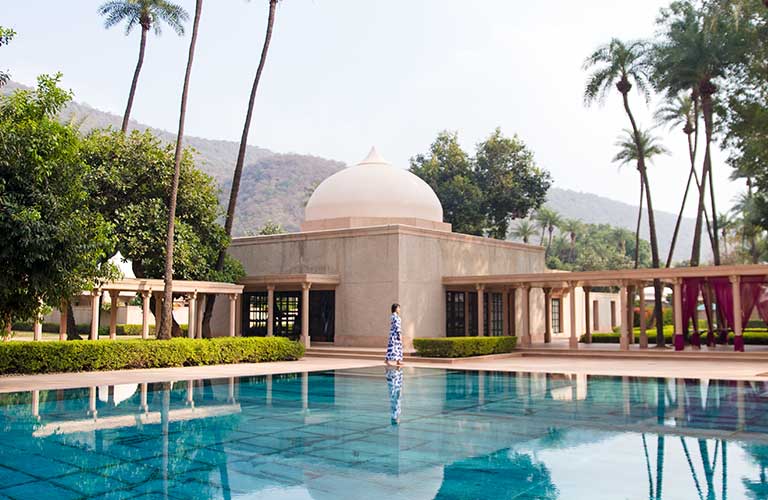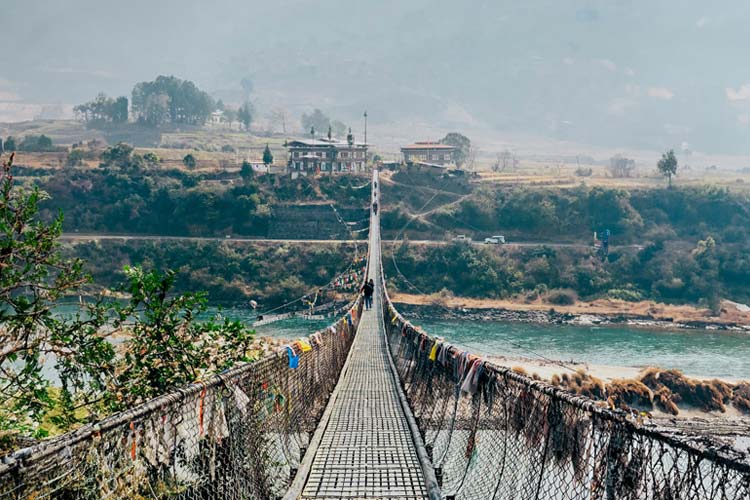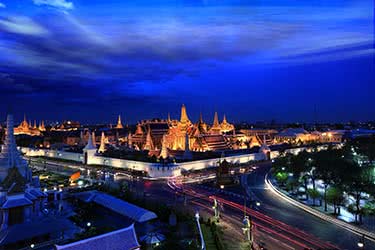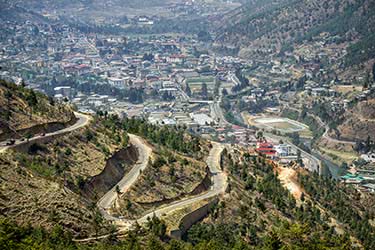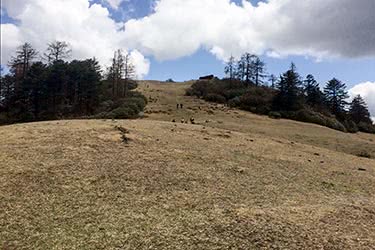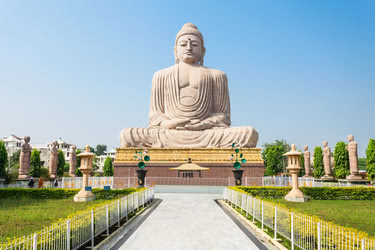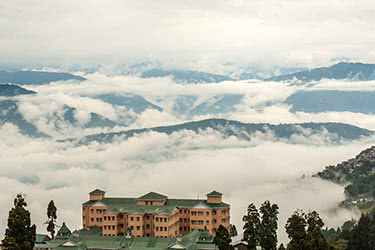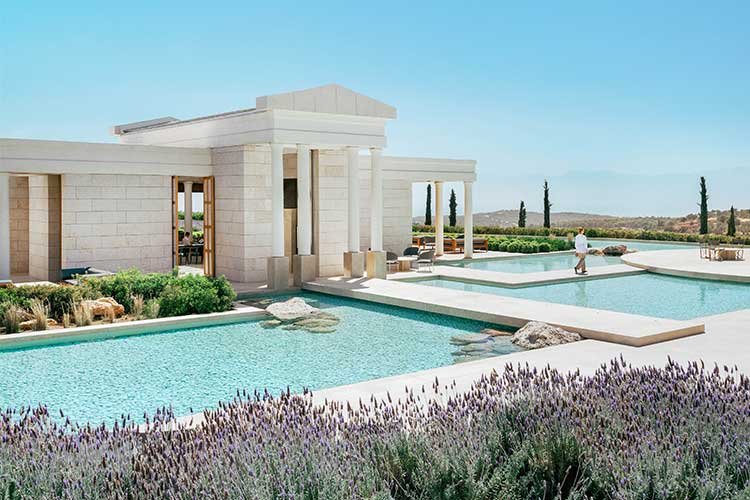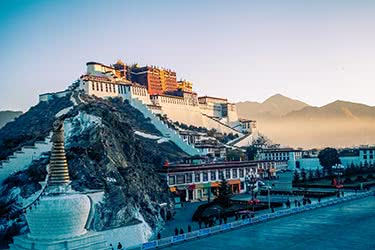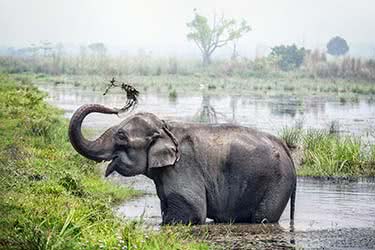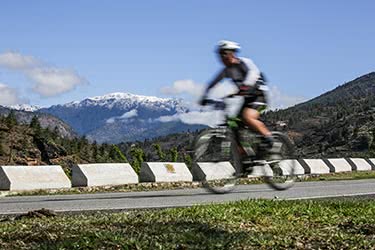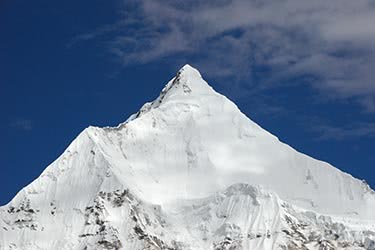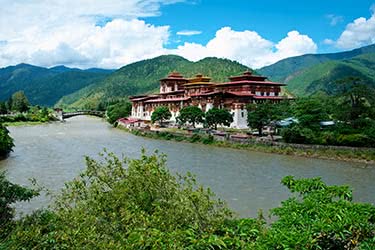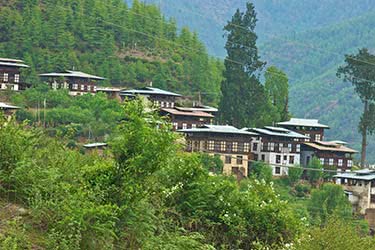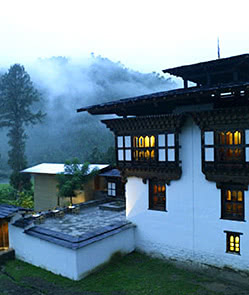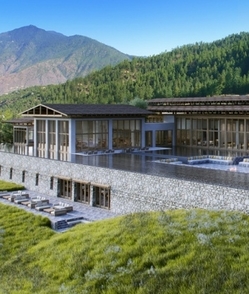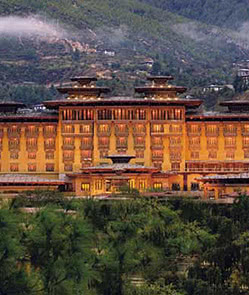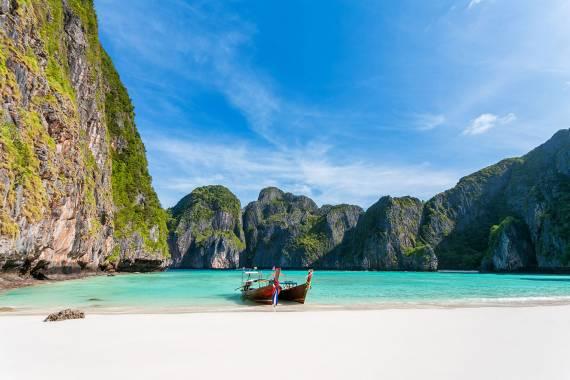
Thimphu
Some of Thimphu's evocative sights include the National Institute for the Thirteen Arts, where students learn respected, centuries-old crafts; the comprehensive, beautiful grounds of the Royal Botanical Garden; and the invigorating, alternative Institute of Traditional Medicine, dedicated to traditional remedies for modern illnesses.
Experiences
A handpicked selection of experiences endorsed by our experts. If you can’t see what you’re looking for, let us know, as our extensive network of local contacts can open many doors.
Archery
Have private lesson in archery, Bhutan's national sport. (Subject to availability, you can also attend an archery tournament at the local stadium.) Today, the Bhutanese use bows employing the latest technology, though historically hunting bows were crafted from bamboo and leather, and a version of this original bow still appears in local matches.
Cheri Monastery
Meet with a professor of Buddhism and explore the Cheri Monastery, home to Bhutan’s first community of monks. Established in 1620, Cheri Monastery has hosted its share of distinguished guests, from visiting Tibetan lamas to the founder of the Bhutanese state. A short distance outside Thimphu, Cheri Monastery sits atop a hill, and offers striking views of the valley below.
Dinner with a Member of Parliament
Pending availability, have dinner with a member of Bhutan’s parliament who is also a close friend of Remote Lands. This is a great opportunity to learn firsthand about the challenges facing Bhutan as it seeks to balance modernization with tradition.
Institute of Traditional Medicine
Visit the National Institute of Traditional Medicine, established in 1967 to preserve the healing traditions of Bhutan – which, until now, have only been transmitted orally. A unique fusion of various elements, Bhutanese medicine combines Ayurvedic philosophy from India with Tibetan influences and Chinese techniques. Go for a medical checkup at the Institute, and tour its impressive laboratory for a primer in this ancient art.
Motithang Takin Preserve
Visit the Motithang Takin Preserve. The national animal of Bhutan, the takin and is a large and somewhat clumsy animal that continues to fascinate taxonomists. Thimphu's preserve was originally a zoo, which was disbanded, but the freed takins simply wandered the streets of Thimphu, so they were returned to their present home to be cared for.
National Library of Thimphu
Discover the National Library and Archives of Bhutan, which houses many ancient Dzongkha and Tibetan texts and is a vibrant example of traditional Bhutanese architecture (built in 1967). The library’s raison d’etre is the preservation of holy Buddhist texts – it is not uncommon to see Bhutanese circumambulating the outside perimeter, due to the texts’ presence.
National Textile Museum
Visit the National Textile Museum. Still very much a living art, the weaving techniques you’ll glimpse here (there are sometimes actual weavers at their looms in addition to permanent exhibits) bear on everything from the simple gho and kira robes that are the national dress for men and women, to the giant thondroel (appliqué tapestries) that are unfurled at the holiest of the annual religious festivals.
Royal Botanical Garden
Pay special attention to the garden’s approximately 369 species of orchid, indigenous to the various micro-climates of this tiny Himalayan country, and which bloom at various times throughout the year. Opened in 1999, the Royal Botanical Garden offers an excellent look into Bhutan's varied flora. The Garden boasts one of the largest rhododendron collections in the world, as well as beautiful assemblages of various trees, bamboo, and medicinal plants, derivatives of which are used in roofing, paints, furniture-making, dyes and incense.
Tarayana Foundation
Visit an orphanage or one of the programs run by the Tarayana Foundation, an organization set up by Her Majesty The Queen of Bhutan to alleviate poverty through training and education, meeting the children and the adults who care for them.
The National Institute for the Thirteen Arts
Visit the National Institute for the Thirteen Arts, or the Zorig Chusum, Bhutan’s leading institution charged with preserving and promoting traditional aesthetics, and contributing to the country’s economy through production of high quality arts and crafts. Observe students’ lessons in painting, calligraphy, embroidery, wood and slate carving, sculpture, and boot making – among others.
Bhutan Regions
Explore in-depth information, experiences and highlights by navigating to specific regions using the links below.
Multi-Country Specialists
Bhutan Goes Well With




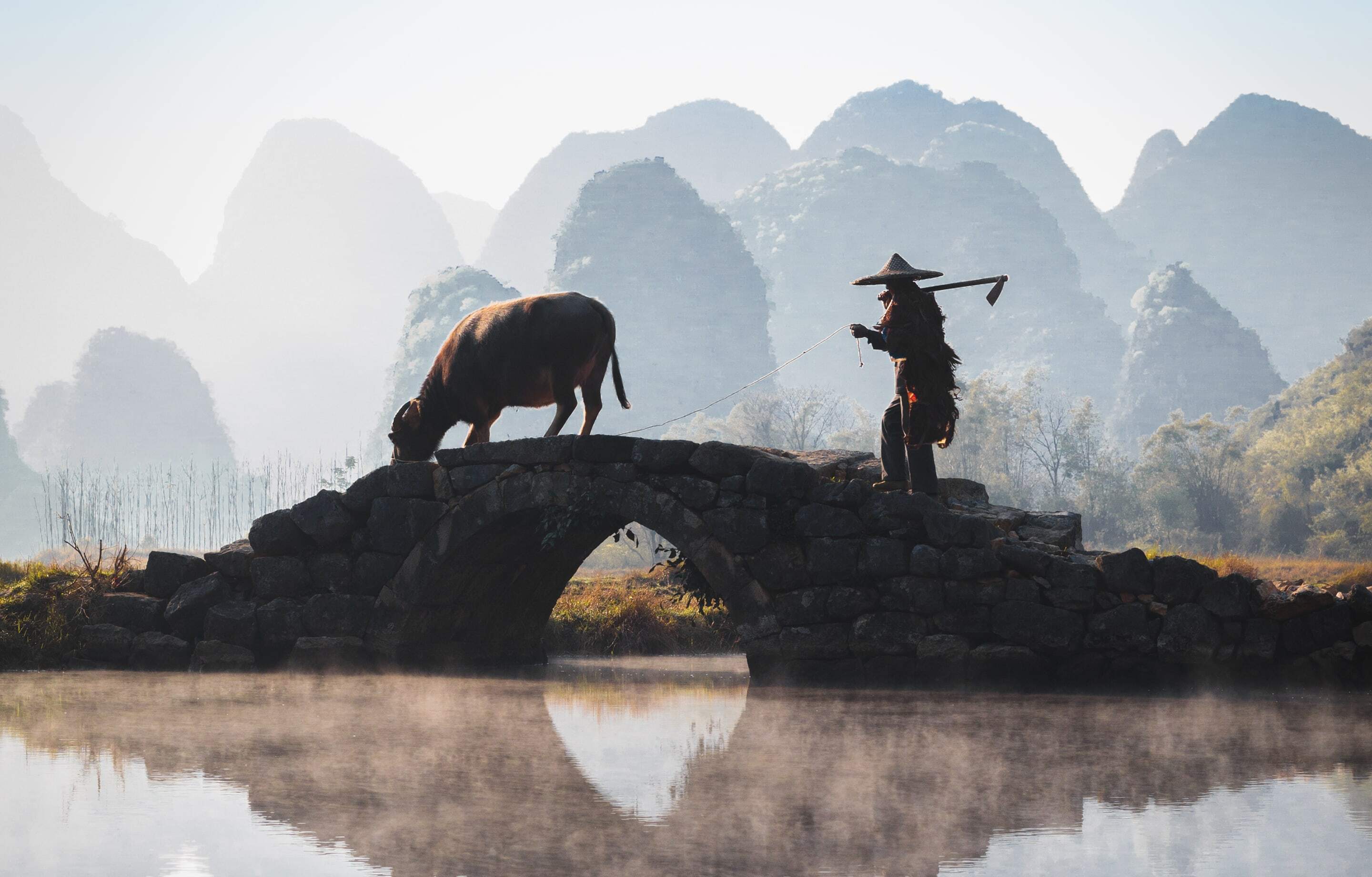
Exclusively Asia
With Remote Lands you'll travel with people who have made Asia the solitary focus of their own lifelong adventure. As our guest, you'll discover Asia on a journey that is completely, authentically your own, adapted from our own remarkable experiences and adventures over the years.
With Remote Lands you'll travel with people who have made Asia the solitary focus of their own lifelong adventure. As our guest, in the continent that our north American founders Catherine and Jay have adored and explored for decades, you'll discover Asia on a journey that is completely, authentically your own, adapted from our own remarkable experiences and adventures over the years.
Travelogues
An Asia-focused magazine brought to you by Remote Lands - a platform for adventure, luxury, and authenticity from experts and explorers around the continent.
Luxury at Both Ends of the Druk Path
- Author
- Travelogues
With Aman destinations at Paro and Thimphu, this trek through Bhutan’s Druk path has luxury at the start and the finish.
Five Amazing Asian Golf Courses
- Author
- Remote Lands
There are hundreds of fantastic golf courses to choose from in Asia, but we’ve picked five that we think are a little bit different, either for their location, history, or just plain quirkiness.
A Family Adventure in the Land of the Thunder Dragon
- Author
- Remote Lands
Swap the resort’s kids club for a foray into a totally distinct culture and you are looking at a very different family holiday, one that is filled with adventure and enriching, horizon-broadening experiences.
What Others Say
Here is a small selection of the kind words our clients have said about us recently.
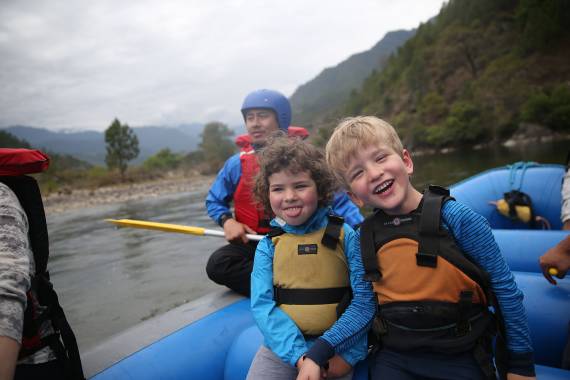
A family from Berlin
We truly fell in love with Bhutan and found it a perfect destination to travel with our 4 and 6 year old children.
